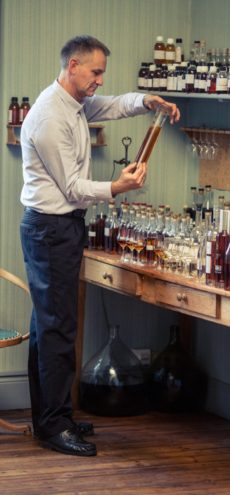- Cognac house: Bache-Gabrielsen
- Grande Champagne cognac
- Liquor dating back to the turn of 18th and 19th centuries
- Pre-phylloxera cognac*
- Oldest distillate: 1790
- Year bottled: 2015
- Number of decanters: 150
On 18 September 2015 the Bache-Gabrielsen cognac house introduced, in cooperation with Wealth Solutions, a limited edition of the Le Sein de Dieu cognac. The liquor was made with the use of distillates produced at the turn of the 18th and 19th centuries, originating from the paradis (treasury) of Thomas Bache-Gabrielsen, the founder of the Bache-Gabrielsen cognac house. The cognac was created entirely prior to the European vineyards being attacked by phylloxera, and its oldest component was distilled back in 1790, i.e. 225 years ago.
Only 150 decanters were offered for sale. Le Sein de Dieu is a cognac that could not be replicated in the present times, as phylloxera significantly impacted the overall form and quality of the beverage. It was Jean-Philippe Bergier, cellar master of the Bache-Gabrielsen cognac house, that embarked on the mission to combine such old and unique distillates.
Each Le Sein de Dieu decanter is numbered and comes in a wooden case made specifically for the needs of this limited edition. It also accompanied by a book by Martine Nouet, a writer and a connoisseur of whiskey and cognac. The publication presents information about the project, history of cognac, Bache-Gabrielsen cognac house and the author’s tasting note. The world premiere of Le Sein de Dieu was held at the Primate’s Palace in Warsaw.
*Phylloxera is an American aphid species that was brought to Europe around 1860 and started to devastate local grapevine cultures.
